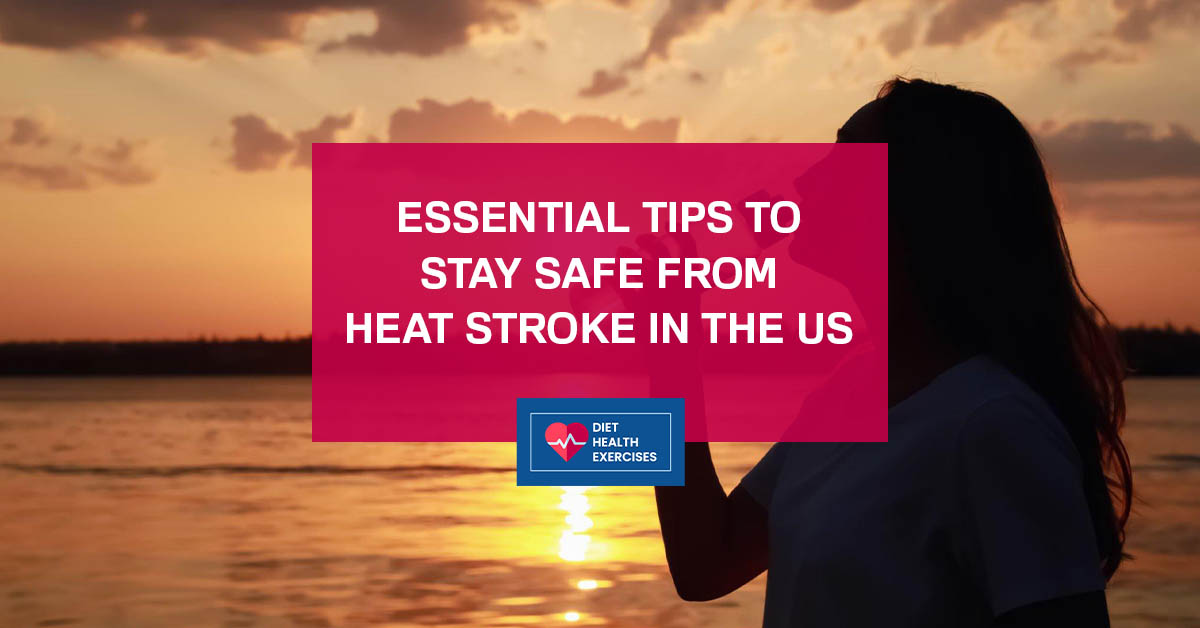As the summer sun blazes across the United States, it’s crucial to stay cool and protected from the scorching heat. Heat stroke, a potentially life-threatening condition, is a real danger during this time of the year. But fear not, because we’ve got you covered with essential tips to beat the heat and stay safe.
In this comprehensive guide, we’ll provide you with expert advice on how to protect yourself and your loved ones from heat stroke. From staying hydrated and seeking shade to wearing the right clothing and recognizing the symptoms, we’ll equip you with all the knowledge you need to stay cool and comfortable to stay safe from heat stroke in the US.
Whether you’re planning a beach vacation, hitting the trails, or simply going about your daily activities, these tips will ensure you can enjoy the summer season while avoiding the risks of heat stroke. So grab a cold drink, sit back, and get ready to beat the heat with our essential tips!
What is heat stroke and why is it dangerous?

Heat stroke is a serious condition that occurs when the body’s temperature regulation system fails and is unable to cool itself down. This can happen when the body is exposed to high temperatures for extended periods, especially when coupled with high humidity. Heat stroke is dangerous because it can lead to organ damage, brain damage, and even death if not treated promptly.
When the body overheats, it can no longer sweat enough to cool itself down, resulting in an increase in body temperature. This can cause symptoms such as confusion, dizziness, rapid heartbeat, nausea, and even loss of consciousness. It’s important to recognize the signs of heat stroke and take immediate action to prevent further complications.
Common symptoms of heat stroke
Heat stroke can manifest itself through various symptoms, and it’s essential to be aware of these signs to identify the condition early on. Some common symptoms of heat stroke include:
- High body temperature: A body temperature of 104°F (40°C) or higher is a clear indication of heat stroke.
- Hot, dry skin: With heat stroke, the body stops sweating, leading to dry and flushed skin.
- Rapid heartbeat: The heart works harder to cool down the body, resulting in an increased heart rate.
- Headache and dizziness: Heat stroke can cause throbbing headaches and a feeling of lightheadedness.
- Nausea and vomiting: The body’s response to overheating can include digestive issues.
- Confusion and disorientation: Heat stroke can affect cognitive function, leading to confusion, irritability, and even seizures.
If you or someone around you experiences these symptoms, it’s important to take immediate action to prevent further complications to stay safe from heat stroke in the US.
Who is at risk for heat stroke?

While anyone can develop heat stroke if exposed to extreme heat for prolonged periods, certain individuals are at a higher risk. The following groups should be especially cautious and take extra precautions to avoid heat stroke:
- Elderly individuals: As we age, our bodies become less efficient at regulating temperature, making older adults more vulnerable to heat stroke.
- Young children: Children are more susceptible to heat stroke due to their smaller bodies and inability to communicate their discomfort effectively.
- Athletes and outdoor workers: Those who engage in strenuous physical activity or work outdoors are at a higher risk due to increased heat exposure.
- Individuals with chronic health conditions: People with conditions such as heart disease, diabetes, and obesity may have a decreased ability to regulate body temperature, making them more susceptible to heat stroke.
It’s important for these at-risk individuals to take extra precautions and closely monitor their body’s response to heat.
Understanding the different stages of heat stroke
Heat stroke can progress through several stages, and it’s important to understand these stages to effectively prevent and treat the condition. The stages of heat stroke are as follows:
- Heat exhaustion: This is the initial stage where the body becomes dehydrated and overheated. Symptoms include excessive sweating, fatigue, and dizziness.
- Heat cramps: If heat exhaustion is not addressed, it can progress to heat cramps, which involve painful muscle contractions due to electrolyte imbalances caused by excessive sweating.
- Heat syncope: Heat syncope is characterized by fainting or lightheadedness due to low blood pressure caused by dehydration and overheating.
- Heat stroke: The final and most severe stage of heat stroke is when the body’s temperature regulation system completely fails, leading to a dangerously high body temperature. This stage requires immediate medical attention.
It’s important to recognize the early stages of heat stroke and take preventative measures, such as seeking shade, staying hydrated, and cooling the body down, to avoid progression to the more severe stages.
Ready to take control of your nutrition? Visit this page for an easy-to-use calorie calculator and achieve your health goals with precision.
Tips to stay safe from heat stroke in the US

Prevention is key when it comes to avoiding heat stroke. By following these essential tips, you can significantly reduce your risk of heat-related illnesses:
- Stay hydrated: Drink plenty of fluids throughout the day, even if you don’t feel thirsty. Water, sports drinks, and electrolyte-rich beverages can help replenish the body’s lost fluids.
- Seek shade and limit sun exposure: When the sun is at its peak, usually between 10 am and 4 pm, try to stay indoors or seek shade under trees or umbrellas. If you must be outside, wear a wide-brimmed hat and lightweight, breathable clothing to protect yourself from the sun’s rays.
- Avoid strenuous activities: During hot weather, it’s best to limit intense physical activities, especially during the peak hours of the day. If you must exercise, do it in the early morning or evening when temperatures are cooler.
- Use sunscreen: Apply a broad-spectrum sunscreen with an SPF of 30 or higher to protect your skin from harmful UV rays. Reapply every two hours, especially if you’re sweating or swimming.
- Cool down: Take regular breaks in air-conditioned spaces or use fans to cool down your body. Applying cold compresses to your neck, wrists, and forehead can also help lower your body temperature.
- Check on vulnerable individuals: If you have elderly relatives, young children, or those with chronic health conditions, make sure to check on them regularly and ensure they are staying cool and hydrated.
By following these preventative measures, you can greatly reduce your risk of heat stroke and enjoy the summer season safely.
How to stay cool during hot weather
Staying cool during hot weather is essential to avoid overheating and the risk of heat stroke. Here are some tips to help you beat the heat and stay comfortable:
- Create a cool environment: Use fans, air conditioners, or open windows to circulate air and create a cooler indoor environment. Close curtains or blinds during the hottest parts of the day to keep the sun’s heat out.
- Take cool showers or baths: A refreshing shower or bath can help lower your body temperature and provide temporary relief from the heat.
- Use cooling products: Invest in cooling towels, misting fans, or ice packs to keep yourself cool when outdoors or in situations where air conditioning is not available.
- Avoid hot and heavy meals: Opt for lighter, cold meals such as salads, fruits, and smoothies. Heavy meals can increase metabolic heat production and make you feel more uncomfortable in hot weather.
- Wear loose and breathable clothing: Choose light-colored, loose-fitting clothing made from breathable materials like cotton or linen. These fabrics allow air to circulate, keeping you cooler.
- Take advantage of natural shade: If you’re outside, seek shaded areas like parks with trees or use umbrellas to protect yourself from direct sunlight.
By implementing these strategies, you can stay cool and comfortable even during the hottest days of summer.
Discover the incredible health advantages of the Ice Hack Diet by visiting our blog. Uncover the multitude of benefits that come with embracing a chill lifestyle.
The importance of staying hydrated

Staying hydrated is crucial to prevent heat stroke and maintain overall health during hot weather. Here’s why hydration is essential and how you can ensure you’re drinking enough fluids:
Dehydration occurs when your body loses more fluids than it takes in, leading to an imbalance that can be dangerous, especially in the heat. When you’re dehydrated, your body struggles to regulate its temperature effectively, making you more susceptible to heat stroke.
To stay hydrated, follow these tips:
- Drink plenty of water: Aim to drink at least 8 cups (64 ounces) of water per day. Keep a refillable water bottle with you at all times as a reminder to hydrate throughout the day.
- Monitor urine color: A pale yellow color indicates good hydration, while darker urine suggests dehydration. Aim for light-colored urine as an indicator of proper hydration.
- Eat water-rich foods: Include hydrating foods in your diet, such as watermelon, cucumbers, oranges, and strawberries. These fruits and vegetables have high water content and can contribute to your overall hydration.
- Limit alcohol and caffeine: Both alcohol and caffeine can dehydrate your body, so it’s best to consume them in moderation and balance them with an increased intake of water.
Remember, staying hydrated is not just important during hot weather but should be a daily habit for optimal health.
Recognizing and treating heat stroke
Despite our best efforts, heat stroke can still occur. It’s crucial to be able to recognize the signs and symptoms and take immediate action. If you suspect someone has heat stroke, follow these steps:
- Move the person to a cooler location: If possible, bring them indoors or find shade. The priority is to lower their body temperature.
- Call emergency services: Heat stroke is a medical emergency, and immediate medical attention is required. Call 911 or the local emergency number for assistance.
- Reduce body temperature: Use any available means to cool the person down, such as applying cold water to their skin, fanning them, or using ice packs on their neck, armpits, and groin area.
- Monitor their condition: Stay with the person until medical help arrives and continue to monitor their vital signs, such as breathing and heart rate.
Remember, early recognition and prompt treatment are crucial for a successful recovery from heat stroke and to stay safe from heat stroke in the US.
Discover the secrets of weight loss without exercise on our blog. Uncover effective strategies and tips to achieve your goals the smart way.
Preparing for heat waves and extreme temperatures

Heat waves can bring extremely high temperatures and pose a significant risk of heat stroke. To prepare for these extreme weather conditions, consider the following:
- Stay informed: Keep an eye on weather forecasts and stay updated on any heat wave warnings or advisories in your area.
- Plan ahead: If you know a heat wave is coming, make necessary arrangements to stay cool. Ensure your air conditioning is working correctly, or identify cooling centers in your community where you can seek relief from the heat.
- Stock up on supplies: Have enough water, electrolyte-rich drinks, and non-perishable foods in case of power outages or difficulty accessing stores during extreme heat.
- Check on vulnerable individuals: Reach out to elderly neighbors, friends, or family members to ensure they have the necessary resources to stay cool and hydrated during a heat wave.
By being prepared and taking proactive measures, you can minimize the impact of heat waves and protect yourself and your loved ones to stay safe from heat stroke in the US.
Frequently Asked Questions
What is heat stroke?
Heat stroke is a serious medical condition that occurs when the body’s temperature regulation system fails due to prolonged exposure to high temperatures. It can lead to organ damage and even death if not treated promptly.
What causes heat stroke?
Heat stroke is primarily caused by prolonged exposure to hot and humid weather. It can also result from strenuous physical activity in high temperatures, dehydration, and not taking necessary precautions.
What are the symptoms of heat stroke?
Symptoms of heat stroke include high body temperature (above 103°F or 39.4°C), rapid pulse, headache, dizziness, nausea, confusion, and sometimes unconsciousness. In severe cases, it can lead to seizures and organ failure.
How can I prevent heat stroke?
To prevent heat stroke, stay hydrated by drinking plenty of water, especially when active or exposed to heat. Wear lightweight and loose-fitting clothing, and use sunscreen. Avoid strenuous activities during the hottest parts of the day and take breaks in shaded or air-conditioned areas to stay safe from heat stroke in the US.
Are certain individuals more at risk for heat stroke?
Yes, individuals at a higher risk include the elderly, young children, people with chronic illnesses, and those taking certain medications. Also, individuals working or exercising outdoors are more susceptible.
What should I do if I suspect someone has heat stroke?
If someone is showing signs of heat stroke, it’s crucial to take immediate action. Move them to a cooler place, provide water, and use fans or air conditioning. Apply cold compresses to their body and call emergency services.
How does humidity impact heat stroke risk?
Humidity can make it harder for the body to cool itself through sweating, increasing the risk of heat stroke. High humidity prevents sweat from evaporating, which is a key cooling mechanism.
Can heat stroke be treated at home?
Mild cases of heat-related illness can be treated at home by moving to a cooler environment, rehydrating, and resting. However, severe cases of heat stroke require immediate medical attention. If in doubt, it’s safer to seek professional medical help.
What’s the difference between heat exhaustion and heat stroke?
Heat exhaustion is a precursor to heat stroke. It involves heavy sweating, weakness, nausea, and clammy skin. If not addressed, it can progress to heat stroke, where body temperature rises significantly and can lead to serious health complications.
How can I stay informed about heat advisories and warnings?
Stay updated through weather forecasts, local news channels, and smartphone apps that provide real-time weather alerts. Many cities also have heat emergency plans in place, so familiarize yourself with your local resources.
Explore our blog to discover the top 5 flu medicines for quick symptom relief and faster recovery. Don’t miss out on valuable insights to help you combat the flu effectively.
Conclusion: Stay safe and beat the heat this summer
As the summer heat intensifies, it’s important to prioritize your safety and take precautions to to stay safe from heat stroke in the US. By staying hydrated, seeking shade, wearing appropriate clothing, and recognizing the symptoms of heat stroke, you can enjoy the summer season while minimizing the risks associated with extreme heat. Remember, heat stroke is a serious condition that requires immediate medical attention, so it’s vital to be vigilant and take prompt action if you or someone around you shows signs of heat-related illness. Stay cool, stay safe, and beat the heat this summer!


